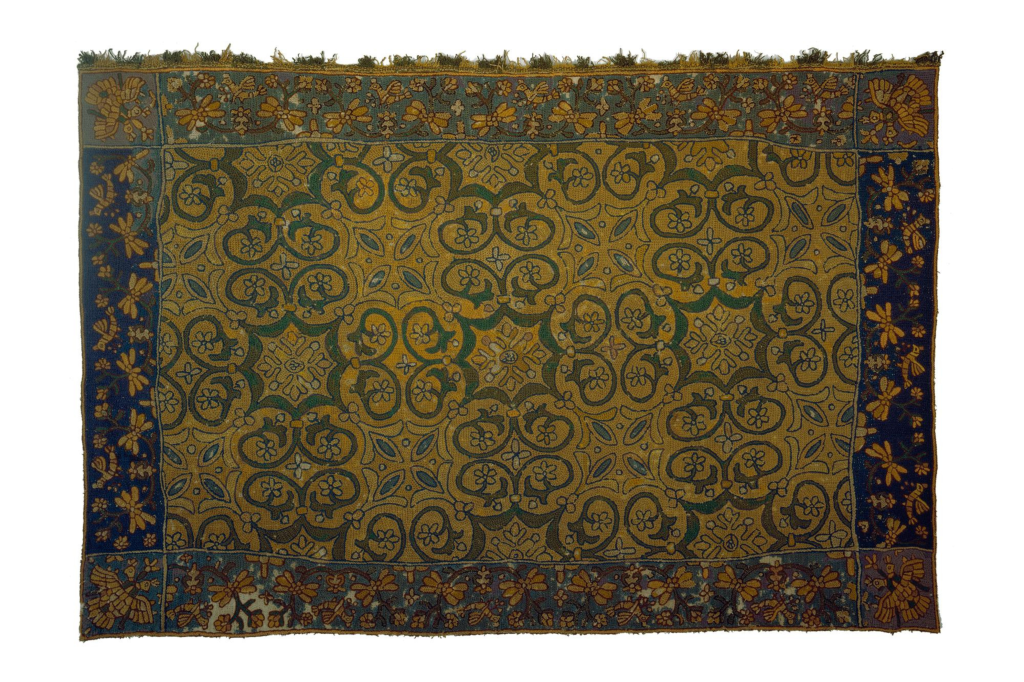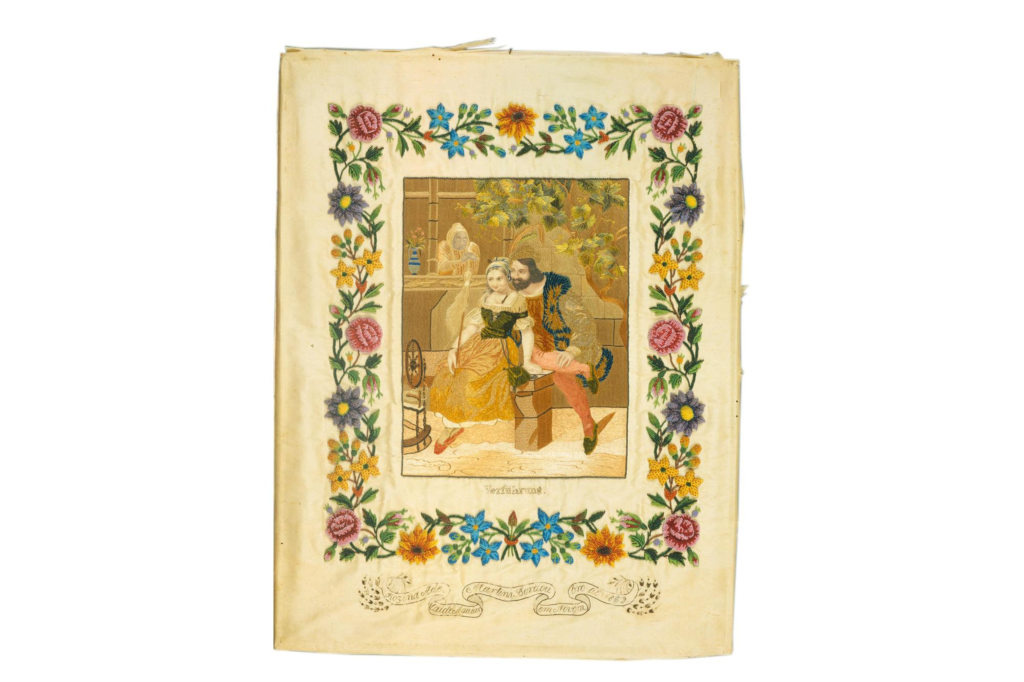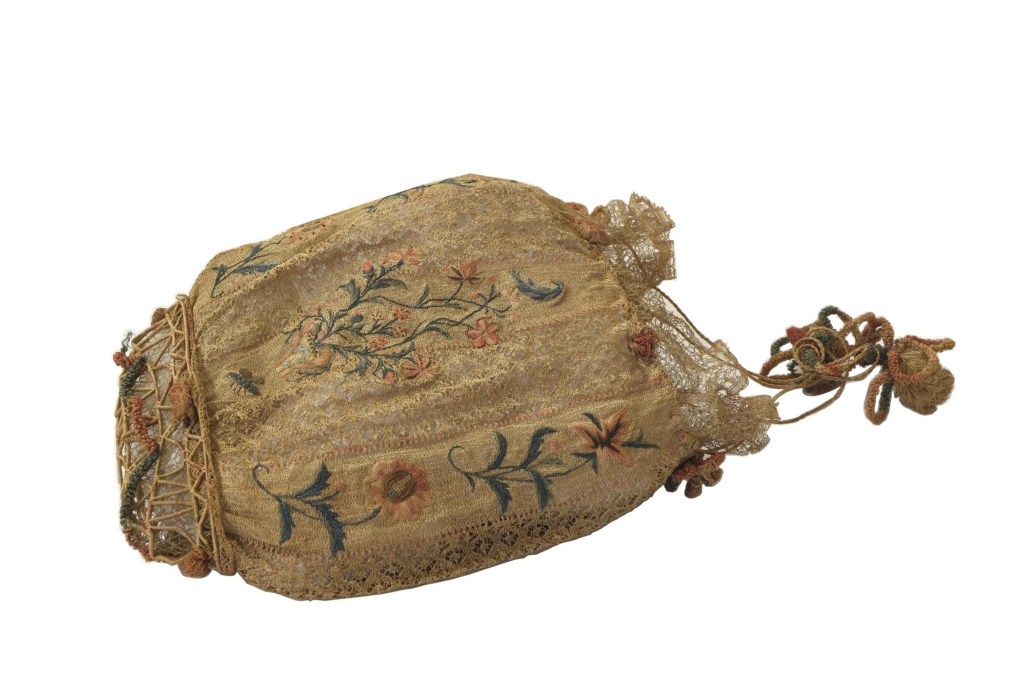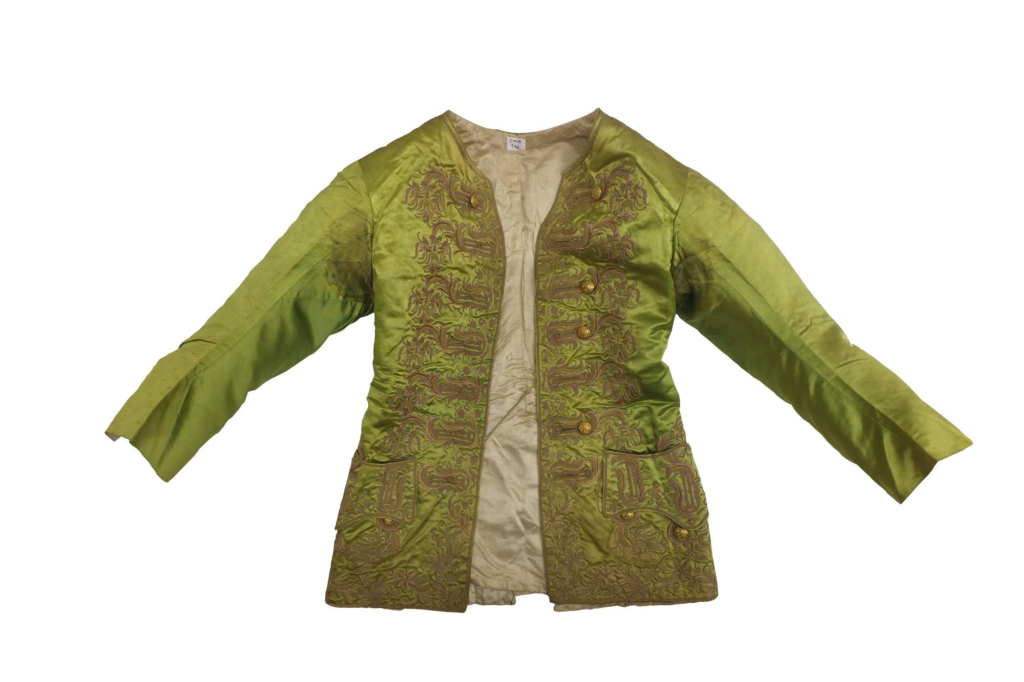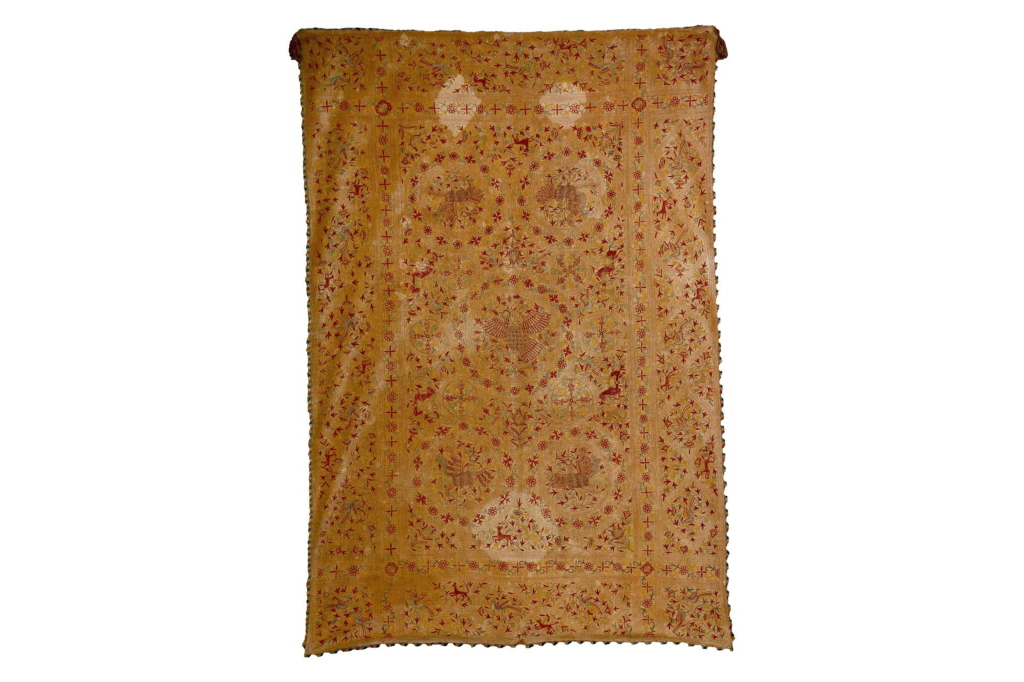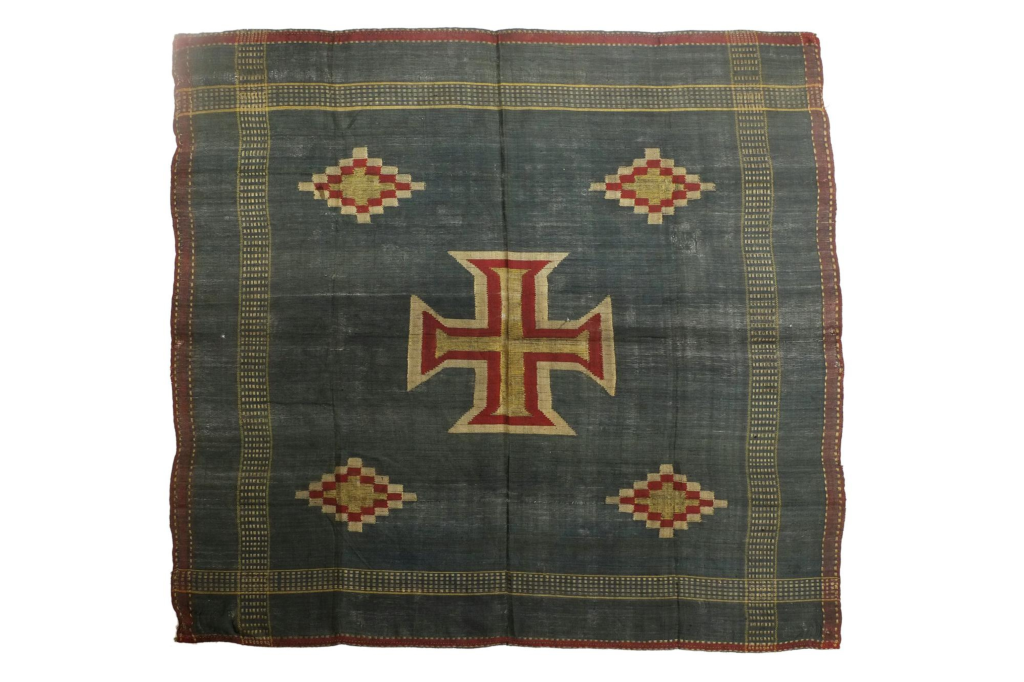
This cloth was designed to cover the chalice that is the recipient of the Blood of Christ after the Consecration performed during mass, the main Catholic religious ceremony.
It is entirely made on a loom, using silk threads and a silver strip. This piece’s fragile appearance comes from the fact that the thread is very fine, giving it lightness and some transparency.
It has the Cross of Christ in the centre, a symbol associated with the period of great sea voyages and the resulting commercial, cultural, political and religious relations with the peoples of other continents. In this case, the connection is with India, linked to Portugal after Vasco da Gama’s first voyage. For this reason, and despite its obvious simplicity, it has been included in exhibition catalogues alluding to the period of the Discoveries and the mutual artistic influences between Portugal and India.

